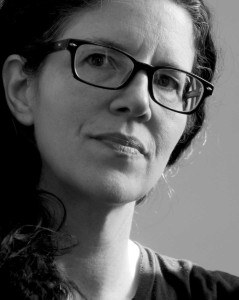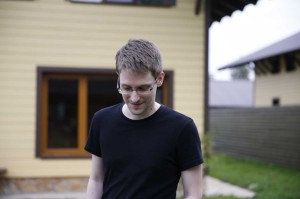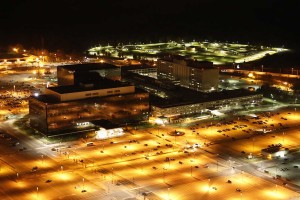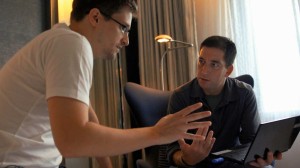
Film is a powerful medium. It can even be considered subversive, especially when perceived to be against the interests of government. Uncovering sensitive information can force a dedicated journalist filmmaker to walk a dangerous line.
Such was the risk journalists Bob Woodward and Carl Bernstein faced when they uncovered the details of the Watergate scandal that led to President Nixon‘s resignation. Such was the risk Citizenfour director Laura Poitras (recipient of the 2012 MacArthur Genius Fellowship and co-recipient of the 2014 Pulitzer Prize for Public Service) faced after a person identifying himself as “citizen four,” revealed massive covert spying programs run by the National Security Agency. The whistleblower that transformed a documentary into a real life thriller, turned out to be computer sub-contractor, Edward Snowden.
Poitras was already several years into filming a documentary on the topic of surveillance in the post-9/11 era when she began getting anonymous encrypted emails. At the beginning the director did not know if the information was legitimate because she did not know who was contacting her and she had no supporting documents. “My gut instinct was that it felt legitimate,” said Poitras. “Over the course of five months of email correspondence, I became increasingly aware of the magnitude of the information that he said he had.”

From the beginning she figured the information would find its way into her work, and although she did expect to get documents to support the allegations, she never expected to meet her nameless source. It was only after her informant told her that he intended to reveal his identity, that she asked permission to film him in order to understand his motivation. At first he did not want to do the story for fear that the media would make him the story, discounting his startling revelations, but Poitras convinced him that “only he could speak to his motivations.” They arrived at the decision to meet in Hong Kong. She learned his name right before traveling.
Not wanting to trigger any governmental interest, Poitras refrained from searching out information on Snowden, so it was a complete surprise when she and journalist Glenn Greenwald of The Guardian learned Snowden was 29-years-old. “Once we got adjusted to that surprise, we were both also surprised by the degree of calm that he had,” explained Poitras. “I think we expected somebody who was taking that kind of risk would show a lot more nervousness. I think he had reached a point where he was at peace. He had made choices that would probably come with negative consequences for him, but he felt the importance of the public understanding this information was worth those risks.”
 Poitras was given documents that supported Snowden’s claims. Although people may or may not agree with the young man’s decision to reveal classified information, she felt his motivation was authentic and his actions were a genuine act of conscience. She had “a front row seat” witnessing the extraordinary moment when someone, in this case Snowden, reached a point of no return. In the moment, it was her job to document, while later, it was her obligation to report the information that had been revealed to her.
Poitras was given documents that supported Snowden’s claims. Although people may or may not agree with the young man’s decision to reveal classified information, she felt his motivation was authentic and his actions were a genuine act of conscience. She had “a front row seat” witnessing the extraordinary moment when someone, in this case Snowden, reached a point of no return. In the moment, it was her job to document, while later, it was her obligation to report the information that had been revealed to her.
As events unfolded, Poitras realized that she had become a participant in another way, which prompted her to tell the story from a first-person perspective, a different approach from her previous films. “I follow a tradition of Cinema Verité,” she noted. “It is all about uncertainty and not knowing where things are going. I’m used to that… to keep following where it was going and once you get to the editing room, to make decisions.” During editorial it became apparent that the material shot in Hong Kong was the heart of the film.
Poitras developed her filmmaking style out of art school. She described the way she works, “I have always used the camera as a tool to express what I want to say. In that sense, I identify more with a kind of solitary creative process. On the other hand, I very much rely on collaborative partnerships in different stages of creative work.” Oftentimes, Poitras goes into the field and works alone, operating her own camera and sound. In Hong Kong, she was the crew, but she had collaborators on other parts of the film, including cinematographers, Kirsten Johnson (The Invisible War) and Trevor Paglen, who documented surveillance sites around the world.
 The shoot in Hong Kong did not rely on interviews, rather Poitras shot what was happening in real time before her camera. “I shy away from interviews. I am really interested in the actions of what people do in circumstances as they unfold,” said Poitras “With that type of shooting you can cut scenes that feel like building blocks like in a narrative project where things are built on scenes. I approach shooting very much like getting the coverage you need for a narrative film. You want establishing shots, cut-aways, continuity, all that stuff.”
The shoot in Hong Kong did not rely on interviews, rather Poitras shot what was happening in real time before her camera. “I shy away from interviews. I am really interested in the actions of what people do in circumstances as they unfold,” said Poitras “With that type of shooting you can cut scenes that feel like building blocks like in a narrative project where things are built on scenes. I approach shooting very much like getting the coverage you need for a narrative film. You want establishing shots, cut-aways, continuity, all that stuff.”
At a certain point in the process it became clear to Poitras that she needed to edit the film outside of the United States, so she set-up in Berlin. Although she had not worked with Mathilde Bonnefoy before, the editor had cut one of the director’s favorite films, Run Lola Run. Bonnefoy and her husband, who became producers on the film, provided support when Poitras came back from Hong Kong.
“There was a real sense that this was dangerous and we were going to anger a lot of people,” revealed Poitras. “I didn’t know if everyone that I worked with would just think this was too risky, and they all would want to step away, but actually the opposite happened. Everybody rallied around to make sure we had an environment that was conducive to the creative process. Nobody was intimidated by the potential consequences of working on the show. Nobody backed out.” Courage was not only shown by the crew, but in a broader sense, by the broadcast and distribution partners.
Poitras’ desire is to make cinema and a dramatic experience. Certain shots, including the long drive through the tunnel that opens the film, capture a psychological space as well as the real space. She was pulled into that psychological space when she stated receiving the emails. “Yes, I’m still doing journalism and want to be true to the facts that you learn in the film, but I really want to take people on a cinematic journey, so that tunnel is the literal tunnel entering into Hong Kong, but for me it also represents something metaphorical. The experience of working on this film psychologically felt like being in a tunnel, not knowing where the end was and what was on the other side, and the uncertainty and fear that came along with that.”
Poitras did not necessarily want to have a narrative closure in the end, “I wanted to make a film that captured this moment in time and also the shock waves that came after it.”





